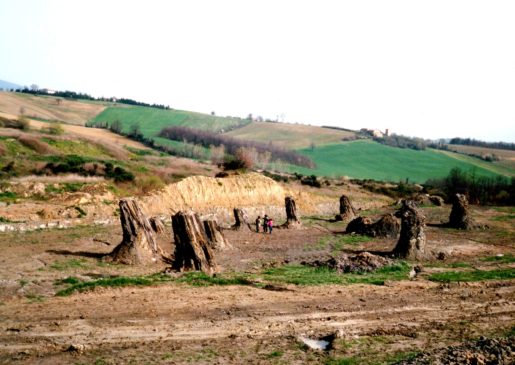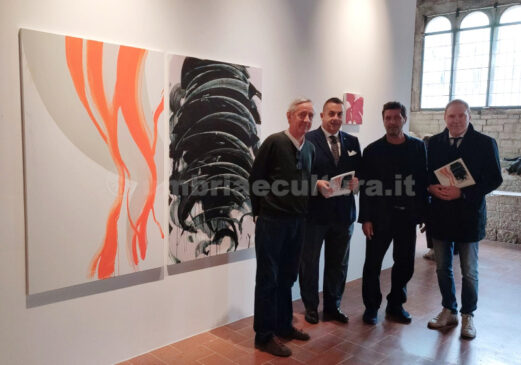The Fossil Forest of Dunarobba, in Avigliano Umbro, is a paleontological site of global importance
Between two and three million years ago, an immense forest of giant sequoias with tall and imposing trunks overlooked the shores of a large lake, populated by a varied fauna teeming with life. It was the Pliocene, that great transition period that saw the appearance on the planet of new species of mammals and, above all, of the first Australopithecines, our ancient grandparents. An era far away from us, from our time, but that we can, surprisingly, get directly in touch.
In Dunarobba, a small hamlet in the municipality of Avigliano Umbro, we find the remains of that forest, the traces of that ancient lake: the clay soil of this place, in fact, returned us, in the 70s, dozens of fossil trunks, that came to light during the excavations for the construction of a clay quarry for the supply of the nearby brick factory. The trunks, perfectly preserved, in a vertical position, are the testimony of a vanished world, to which we can only approach through this magnificent finds.
The Fossil Forest of Dunarobba is an almost unique reality of its kind, thanks to the particular conditions that made a fossilization process possible: the wood, unlike what we observe in most similar sites, has not petrified; it simply remained in its originality, fossilizing itself. This unusual procedure is the result of a series of favorable conditions: the clayey quality of the soil, combined with its gradual and progressive sinking, contributed to the slow burial of the trees and their continued protection over the millennia.
The problem that arose at the time of the discovery was not easy to solve: how can we continue to adequately protect the trunks, now exposed to all kinds of atmospheric phenomena and, therefore, to the inevitable degradation? For this purpose, the Superintendency for the Archaeological Heritage of Umbria has implemented, over the years, studies and work plans, carried out in the creation of the Center of Plant Paleontology, in the late 1990s. The trunks were equipped with canopies, which, unfortunately, proved to be an insufficient solution in the long run. Furthermore, a former management, perhaps not very aware of the site’s naturalistic and scientific potential, has contributed, over time, to leaving the Forest in a corner, almost forgotten by academia and scientific tourism.
Thanks to the interest of some citizens and young people of the place, things are moving and, since 2018, the Fossil Forest of Dunarobba has a new management: the Cooperative Surgente has taken charge of it and has started to promote a series of initiatives aimed at the re-evaluation of the important naturalistic site, up to looking optimistically to the future with ambitious ideas for the rearrangement of the trunks themselves. A work plan that is placed in a wider perspective, aimed at the re-evaluation of the entire territory of the Municipality of Avigliano Umbro, custodian of another small naturalistic jewel of great paleontological interest: the Grotta Bella, a natural cavity where signs of men dating back to the Lower Neolithic were found.
Find the Fossil Forest in Dunarobba on Google Maps:



